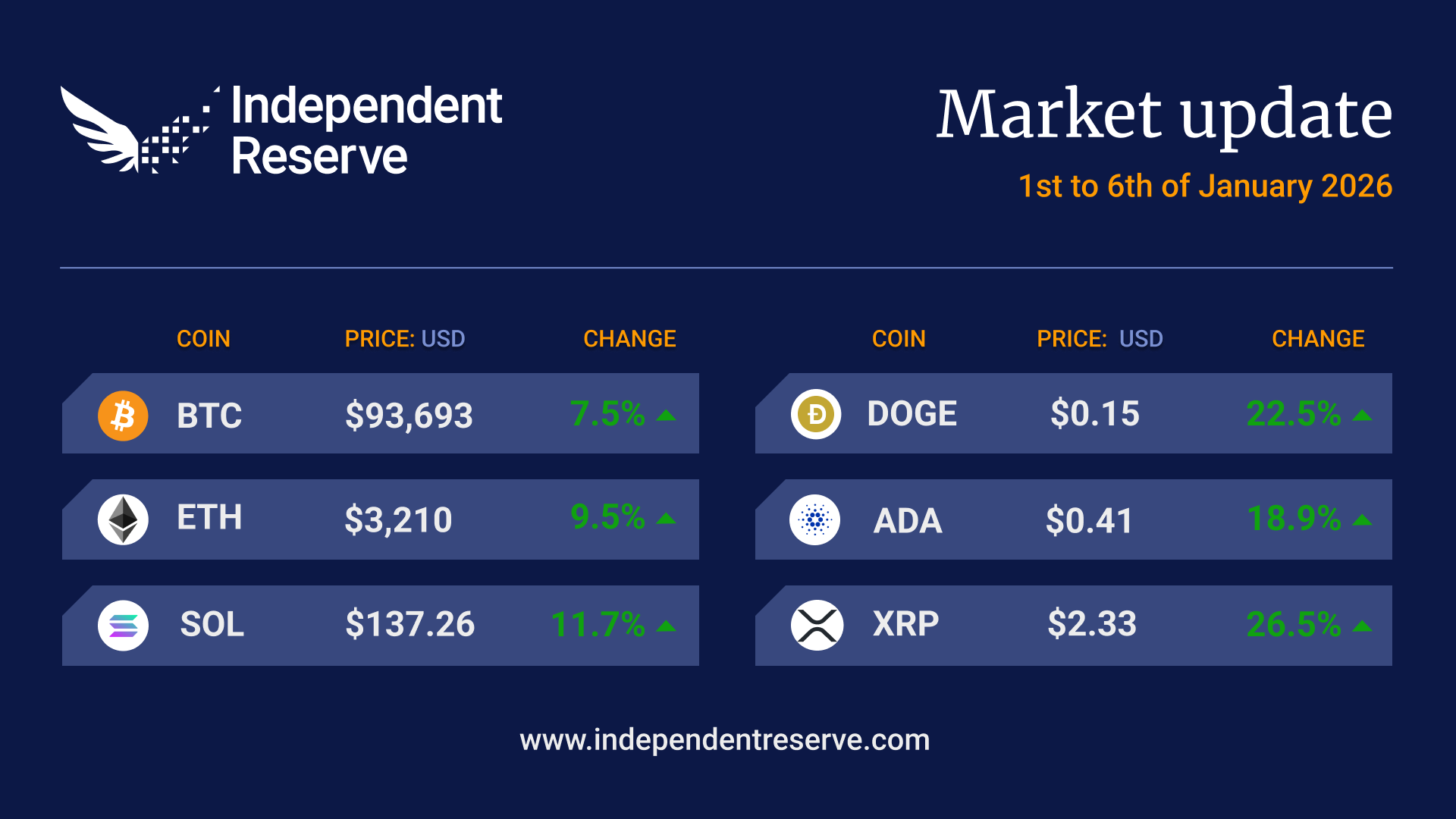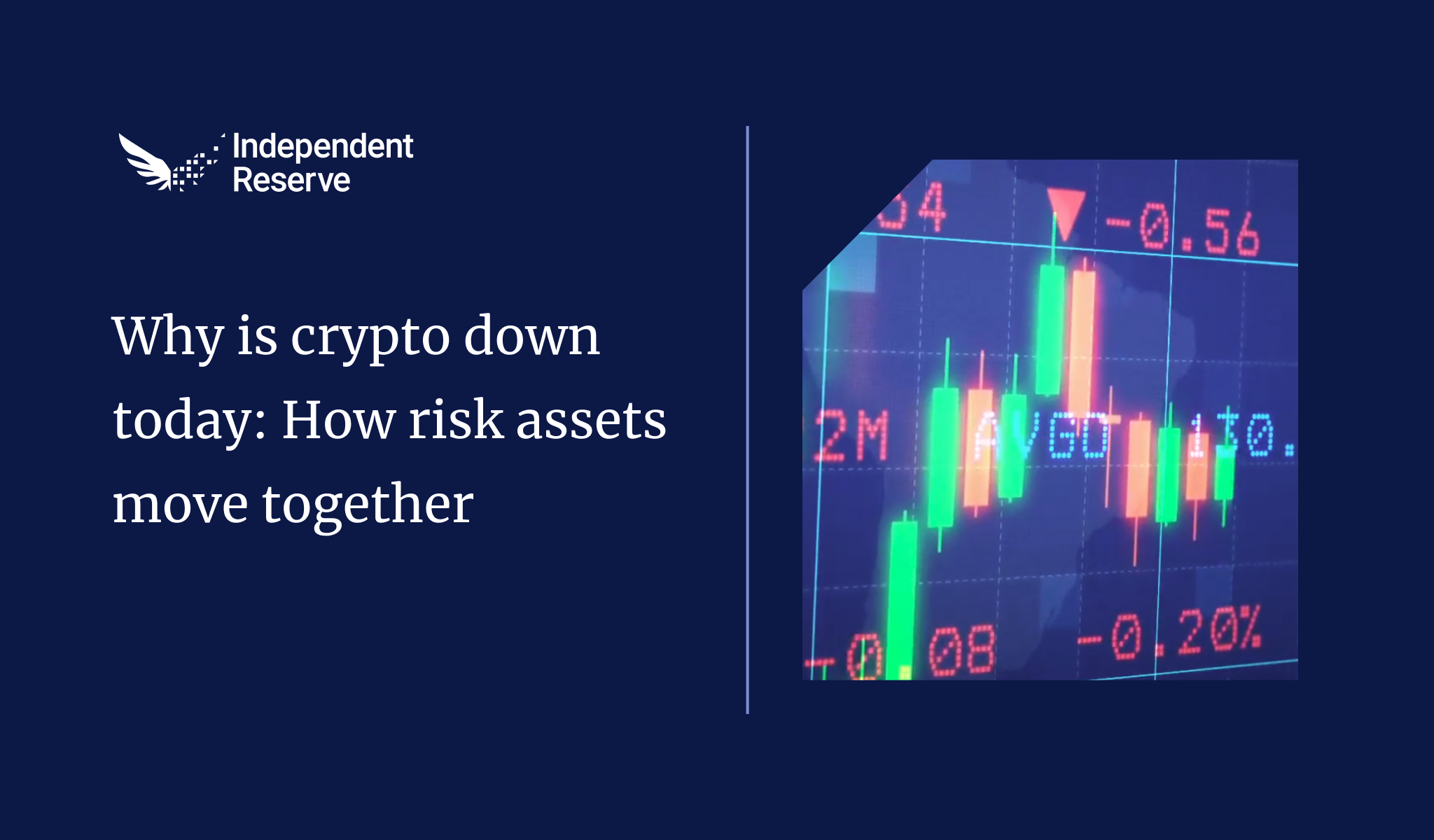In Markets
Bitcoin increased 37.9% over the past month and is trading at levels last seen three months ago. It’s up 17% for the week to A$63,100 (US$46K) and crossed the 200-day moving average on Monday – a bullish sign. Glassnode’s Entry-Adjusted Net Unrealized Profit/Loss chart is also back in the ‘belief’ zone – which is where it was when Bitcoin surged from around A$14K (US$10.2K) last October to its all-time high in April this year. Ethereum gained 19.4% to trade around A$4,290 (US$3.1K) and everything else was up too: Ripple (9.6%), Polkadot (12.7%), Dogecoin (25.3%), Uniswap (25.4%), Bitcoin Cash (8.65%), Litecoin (18.2%), Chainlink (1.9%), Stellar (6.9%), Aave (15.8%), Synthetix (4.5%). The Crypto Fear and Greed Index is at 65, or ‘greed’.
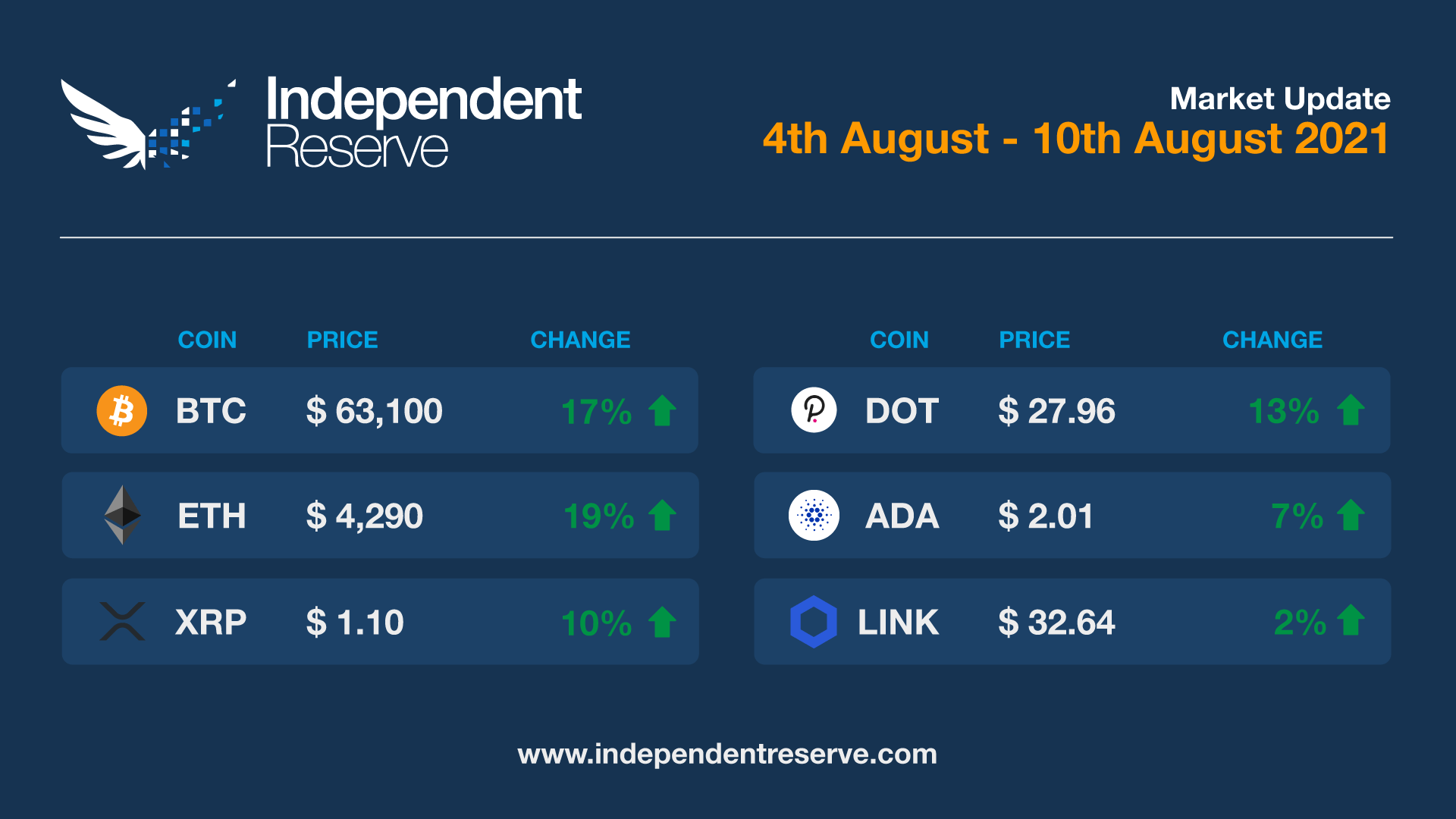
From the IR OTC Desk
The outperformance of ETH realised volatility (relative to implied vol.) following the EIP-1559 release highlighted natural underlying demand for ETH – this is something we have also been seeing across the desk. Technically, this should make the ETH/BTC cross quite a key indicator of broad market strength.
From a macro perspective, this week sees the US July CPI release (Wednesday). While the US dollar has been steady in its appreciation to now trade near its four decade average, inflation has picked up quite rapidly over the last four monthly releases. The Federal Reserve has expectations that this inflation pickup will prove transitory – this month’s release will be another key piece to the monetary policy puzzle.
For any trading needs, please don’t hesitate to get in touch.
In Headlines
Crypto tax proposal remains unamended
After hammering out a bipartisan compromise on a US senate amendment to the controversial crypto tax provisions tacked onto the Infrastructure Bill, a single 87-year-old Senator intervened to prevent it from being voted on earlier today. That means the original wording in the bill, which defines everyone from miners to software developers as ‘brokers’ and forces them to comply with onerous tax reporting requirements, looks set to pass unobstructed. The bill can still be amended in the house and doesn’t go into effect for two years anyway. The lobbying effort has however shown crypto is becoming a significant force in Washington. Given Treasury Secretary Janet Yellen backed the compromise amendment, which would have narrowed the definition of broker considerably, it’s entirely possible the industry may have lost the battle but will still end up winning the war.
Tether attestation
Tether has printed up a fresh billion USDT on Tron and released an independent accountants’ report stating all its tokens are fully backed by reserves. The controversial stablecoin giant has been reducing the amount of risky ‘commercial paper’ it holds, from 65.30% in March, to 57.7% at the end of June.
Mr Przelozny calls for legislation
Independent Reserve CEO Adrian Przelozny has called for new legislation to protect investors and minimum operating standards for exchanges at an appearance before the Committee on Australia as a Technology and Financial Centre. “There are no rules which we need to follow, no external audits or IT security standards,” he told the committee. “This is ridiculous and needs to change to protect consumers. How can we hold $1 billion worth of client assets without having to prove to an auditor these assets exist?” At present almost anyone can set up an exchange, with MyCryptoWallet and ACX collapsing in recent years. Blockchain Australia meanwhile has been pushing for safe harbour provisions to allow firms to innovate without being stifled by red tape.
London calling out ‘ultrasound money’
The London upgrade to Ethereum went off without a hitch last week, leading co-founder Vitalik Buterin to say it has increased his confidence in the coming merge of Eth and Eth2. The network has already burned almost 20,000 ETH (around A$86M worth) thanks to EIP-1559, which has effectively cut the ETH inflation rate from 4.2% down to 2.6%. After the merge, when proof of stake is live, issuance is likely to become deflationary which Ethereans call ‘ultrasound money’ (seemingly in an effort to annoy Bitcoiners).
Also, according to Ultrasound.money, the tracker shows that the popular NFT marketplace OpenSea is the top ETH burner with 2,311 ETH, or just over US$7 million having been destroyed since the upgrade was launched. An estimate made by The Bankless DeFi newsletter on the future supply of ETH modelled burn rates using data on fees generated in 2021, concluded: “Annualising these figures, this means that between 800,000 – 2.4 million ETH is projected to be burned in 2021.”
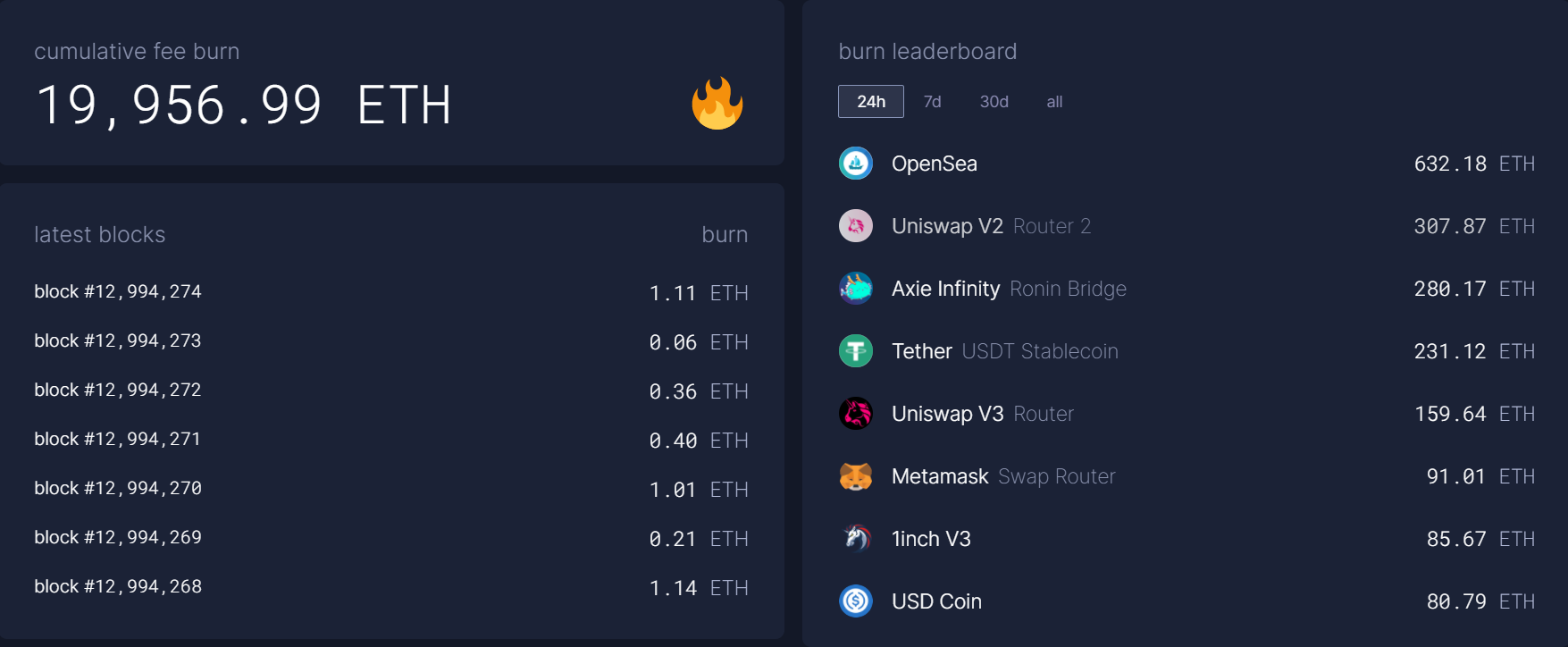
Crossing the 200 DMA
Bitcoin jumped above the 200-day moving average on Monday and Fundstrat’s Tom Lee says that means now is the perfect time to buy, as Bitcoin usually sees significant gains in the wake of the signal. In fact, Fundstrat’s number three rule for crypto investing: “You always buy Bitcoin when it breaks above its 200-day moving average.” Lee believes that US$100K (A$136K) is in sight by the end of the year. If the price keeps rising, we could see the 50 DMA cross above the 200 DMA in a ‘golden cross’ within a couple of weeks.
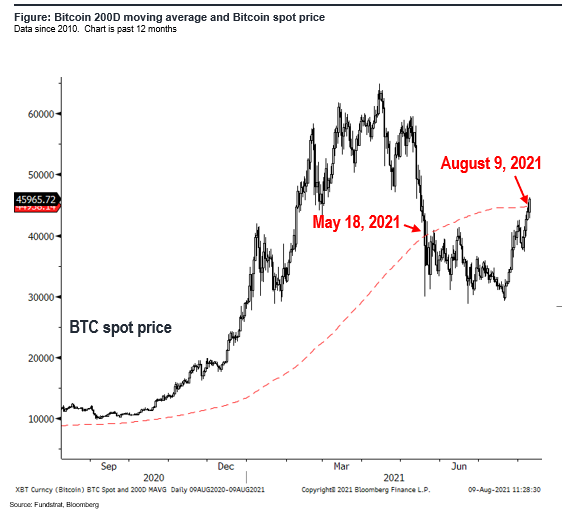
SEC chairman on Satoshi’s Innovation
SEC chairman Gary Gensler presented last week at the Aspen Security Forum. With reference to the Bitcoin whitepaper and its creator, Satoshi Nakamoto, he noted that during his time at MIT, before being head of the SEC, he researched, wrote, and taught on the topics of bitcoin, cryptocurrency, and blockchain technology. Stating, “though there was a lot of hype masquerading as reality in the crypto field, Nakamoto’s innovation is real. Further, it has been and could continue to be a catalyst for change in the fields of finance and money.”
Gensler said that “At its core, Nakamoto was trying to create a private form of money with no central intermediary, such as a central bank or commercial banks.” However, his current belief is that “no single crypto asset, though, broadly fulfills all the functions of money.” Elaborating that they “haven’t been used much as a unit of account” and he has not seen crypto “used much as a medium of exchange”. Gensler also made clear that he is “technology-neutral,” but when it comes to cryptocurrency regulation, “I am anything but public policy-neutral.”
Until next week, happy trading!

